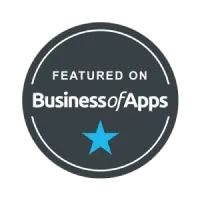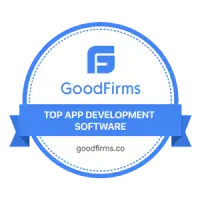- Home
- Our Services
- Mobile App Development
- Full Stack Development
- PHP Development
- eCommerce & CMS Development
- UI/UX & Design Services
Mobile App Developer
Full Stack Development
PHP Development
eCommerce & CMS Development
UI/UX & Design Services
Awards & Recognition






750+
Completed Projects features
20+
Professionals
8+
Years of Experience
- Portfolio
- About Us
Create disruptive business innovations through high-end creativity and world-class alliances.
or call us at
Vacancies for skilled developers and designers are available at all times!
- Hire us

Hire Mobile App Developers

Hire eCommerce & CMS Developers

On-Time Delivery

100% Transparency

One-to-one Communication

Engagement Models
Empower Your Business with Dedicated Developers - Blog
- ITS Training
Graphics Design

250+
Students Trained

8+
Course

150+
Students Placement

20+
Placement Partners
Pick The Right Course To Build Your Career
Accessibility in Flutter: Building Inclusive Mobile Apps
By:
ITS
Category:
Flutter App Development
Introduction:
Creating mobile apps that are universally accessible can sometimes feel like climbing a mountain – but remember, we’re all scaling this mountain peak side by side. We’re heavily experienced developers and have discovered some truly effective strategies to ensure your Flutter app is usable and welcoming to users with disabilities.
The Importance of Accessibility in Mobile Apps
When we make our mobile apps accessible, we’re not just ticking off a checklist; we’re opening doors for disabled individuals from all walks of life to engage with technology in meaningful ways.
Ensuring accessibility on a mobile device is essential—it transforms how a diverse range of users interact with apps and significantly elevates the quality of our digital landscape. Making our apps accessible opens the door to users with diverse abilities, including visual, cognitive, and motor impairments. We integrate screen readers such as VoiceOver on iOS and Android’s TalkBack, ensuring that voice commands help navigate through the app effectively.
Focusing on accessibility widens the audience and enhances the overall caliber of our mobile app development. We understand that incorporating Flutter’s accessibility features leads to a broader audience and a more robust and user-friendly product. It’s essential to realize that an app accessible to everyone, including those with visual impairments or cognitive conditions, fosters positive user experiences.
How to Improve Accessibility in Flutter
When we discuss enhancing accessibility in Flutter, we’re looking at inclusive design strategies that ensure our apps cater to the unique needs of each user. It’s about integrating thoughtful features and coding practices that make our creations easily navigable and understandable by everyone, including people with disabilities.
Using Accessibility Features & Widgets
We understand the significance of incorporating the app’s accessibility features into our mobile apps. TechAhead’s mission with Flutter is to ensure that everyone can seamlessly interact with the applications we create, regardless of ability.
- Employ the Semantics widget: We wrap our UI components in a Semantics widget to provide a descriptive label for screen readers. This aids users with vision impairments by conveying clear information about what each element on the screen represents.
- Customize touch target size: Flutter allows us to adjust the size of touch targets, making them large enough for people with motor impairments to interact easily. A well-sized button or interactive area reduces frustration and makes our apps more user-friendly.
- Implement sufficient contrast: We design our apps, ensuring that text and interface elements stand out against their background. High contrast helps users with limited vision or color blindness perceive content clearly, which improves overall usability.
- Provide text-to-speech feedback: With accessibility-focused widgets like the AnnounceSemanticsEvent, we can give spoken feedback when vital changes occur on-screen. This feature supports blind users or those who struggle with reading text by audibly describing the actions taking place in the app.
- Avoid reliance on gestures alone: We design our apps so that actions are not solely dependent on complex gestures. Users who find it challenging to perform gestures due to physical limitations can still navigate smoothly using alternative controls.
- Include captions and descriptions for media: Whenever we incorporate images, videos, or other forms of media in our apps, we are diligent about adding captions and descriptions. These serve as crucial information sources for individuals utilizing assistive technologies such as screen readers.
- Conduct thorough accessibility testing: Testing is key. Using tools like TalkBack for Android and VoiceOver for iOS during the development stages helps us ensure that our Flutter app’s accessibility features function correctly across both platforms before release.
Following Best Practices and Guidelines
Ensuring our Flutter apps are accessible to everyone is a critical step in the development process. We follow best practices and guidelines meticulously to create inclusive mobile experiences.
- We start with the accessibility release checklist, a detailed guide that helps us review all accessibility features before launching an app.
- Our team regularly updates their know-how on the latest standards for accessibility to stay ahead of industry norms.
- Implementing separate test files for accessibility allows us to focus on specific needs without cluttering the main codebase.
- We use automated tools, scanners, and manual testing to cover as many scenarios as possible.
- Testing on real devices like iPhones, iPads, and small-screen Android devices is non-negotiable; simulators can’t catch everything.
- Incorporating screen reader-friendly features such as alt text for images and proper heading structures is a priority. We test with NVDA on Windows, VoiceOver on macOS and iOS, TalkBack on Android, and Orca on GNOME desktop for Linux systems.
- We design our layout considering users with cognitive impairments or dyslexia by choosing clear fonts like Helvetica or using specially designed ones like OpenDyslexic.
- All interactive elements have sufficient size and spacing. This ensures that touch targets are easily accessible even on smaller screens or by those with motor difficulties.
- When necessary, visual cues are complemented with auditory signals to support blind people or those with low vision.
- Our color schemes pass WCAG color contrast ratios, aiding users with color vision deficiencies.
- When creating forms or entry points for user input, we ensure labels are linked correctly to form fields so screen readers can interpret them accurately.
- Our content remains semantic; we avoid using layout tables and ensure our HTML is clean and well-structured. Making sure that every part of our app’s UI makes sense when linearized is essential for assistive technologies.
- Every video content includes captions or transcripts so users who are deaf or hard of hearing can access the information.
Conclusion
We’ve explored accessibility in Flutter, emphasizing its pivotal role in creating apps that welcome everyone. With the right widgets and adherence to best practices testing accessibility everywhere, we can craft experiences that resonate with a diverse audience on any device.

Join them by using our services and grow your business.

“At Inspire Techno Solution , our mission is to continuously innovate the best ways to train the next generation of developers and to transform the way tech education is delivered.”
Related Blogs
Top Reasons to Choose Flutter in 2024: Dive into the Latest Features & Benefits
As we step into 2024, Flutter emerges as a powerhouse, offering developers a cutting-edge toolkit
15 Flutter development tips and tricks every Flutter Developer Must know
Flutter has risen to prominence as a favored framework, renowned for its ability to craft
Accessibility in Flutter: Building Inclusive Mobile Apps
Creating mobile apps that are universally accessible can sometimes feel like climbing a mountain –
